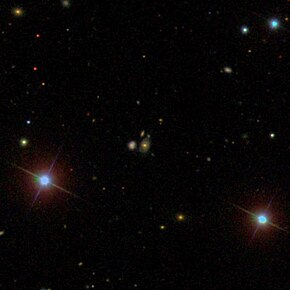
IC 1011 is a barred spiral galaxy with apparent magnitude of 14.7, and with a redshift of z=0.02564 (SIMBAD) or 0.025703 (NASA), yielding a distance of 100 to 120 megaparsecs. Its light has taken 349.5 million years to travel to Earth. IC 1011's calculated age is approximately 12.95 billion years. The IC designation comes from the Index Catalogue.

IC 3 is a compact elliptical galaxy located approximately 228 million light-years away in the constellation of Pisces. The galaxy was discovered by astronomer Stéphane Javelle on August 27, 1892.

IC 2006 is an elliptical galaxy in the constellation Eridanus. The galaxy was discovered on 3 October 1897 by the American astronomer Lewis A. Swift. It is estimated to be around 60 to 70 million light years away, in the Fornax Cluster. The galaxy is one of the smaller in the Fornax cluster, with a diameter of only 35 000 light-years.

NGC 7002 is a large elliptical galaxy around 320 million light-years away from Earth in the constellation of Indus. The galaxy was discovered by English astronomer John Herschel on September 30, 1834. NGC 7002 is also part of a group of galaxies that contains the nearby galaxy NGC 7004.
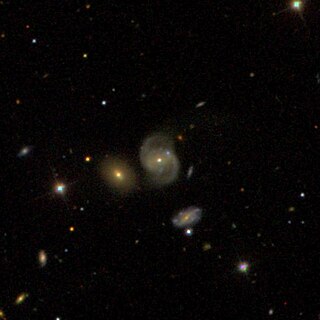
IC 4461 is a spiral galaxy located in the Boötes constellation, located at distance of 417 million light-years from both the Milky Way and Andromeda Galaxy.

IC 158 is an elliptical galaxy in the constellation of Cetus. The galaxy was discovered on December 14, 1892, by French astronomer, Stephane Javelle. According to Javelle, when he first saw the object, he described it as faint, small and round with a brighter middle. It has an approximate diameter of 200,000 light-years making it larger compared to the Milky Way. IC 158 is located 700 million light-years away from the Solar System and is moving away at the speed of 15,678 kilometers per second.
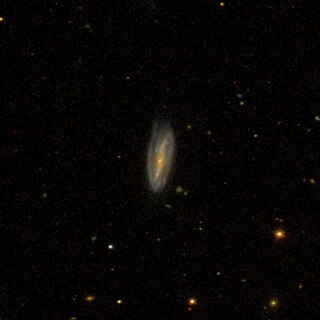
IC 3505 is a barred spiral galaxy located 640 million light-years away from the Solar System in the Coma Berenices constellation. With an apparent size of 0.95 by 0.35 arcmin, IC 3505 has an estimated diameter of 170,000 light-years, making it slightly larger compared to the Milky Way. It is categorized as a LINER galaxy with an active galactic nucleus emitting weak emission-lines.
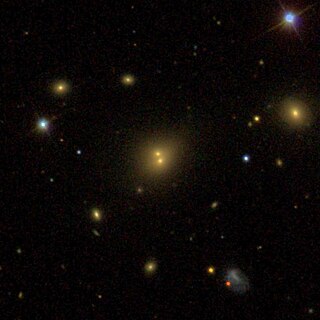
IC 3441 is a type ES-0 lenticular galaxy with a bar located 880 million light-years away from the Solar System in the constellation of Coma Berenices. IC 3441 was discovered on March 23, 1903, by the astronomer Max Wolf and it does not have an active galactic nucleus or an indication of star formation.

IC 4017 is a type Sbc spiral galaxy with a bar located in Coma Berenices. It is located 2.3 billion light-years away and was discovered on January 27, 1904, by Max Wolf. At the redshift of 0.1773, IC 4017 is the most furthest object in the Index Catalogue and is said to be possibly interacting with its companion.

IC 1166 are a pair of galaxies in the Corona Borealis constellation comprising IC 1166 NED01 and IC 1166 NED02. They are located 977 million light-years from the Solar System and were discovered on July 28, 1892, by Stephane Javelle.
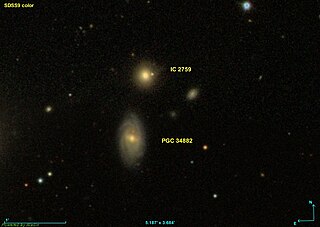
IC 2759 is a small type E elliptical galaxy located in the constellation of Leo. It is located 350 million light-years away from the Solar System and was discovered on April 24, 1897, by Guillaume Bigourdan. Sometimes IC 2759 is confused with the spiral galaxy, PGC 34882 which is located south of the galaxy.

IC 2816 known as PGC 3472124, is a type Sbc spiral galaxy with a ring structure located in the Leo constellation. It is located 878 million light-years from the Solar System and has apparent dimensions of 0.59 x 0.22 arcmin, meaning its diameter is 160,000 light-years across.

IC 3222 known as PGC 40065 and UGC 7437, is a barred spiral galaxy with a ring structure located in the constellation of Coma Berenices. It is located 869 million light-years from the Solar System and has dimensions of 0.90 x 0.6 arcmin, meaning IC 3222 is 235,000 light-years across in diameter. This makes it a large galaxy. IC 3222 was discovered by Max Wolf on March 23, 1903.

IC 4588 is a type E elliptical galaxy located in the constellation Serpens. It is located 729 million light-years from the Solar System and has a dimension of 0.30 x 0.3 arcmin meaning its diameter is 64,000 light-years across. IC 4588 was discovered by Stephane Javelle on July 15, 1903.

IC 4516 is a type E elliptical galaxy located in Boötes. Its redshift is 0.045618 which corresponds IC 4516 to be located 667 million light-years from Earth. The galaxy was discovered by Lewis Swift on June 2, 1898, which was his last discovery after spending half a century observing astronomical objects, starting with the observation of the Great Comet in 1843.

IC 3278 known as PGC 40345, is a large type SBbc spiral galaxy located in Coma Berenices. Its redshift is 0.093851, meaning IC 3278 is 1.29 billion light-years away from Earth, which given its apparent dimensions of 0.80 x 0.6 arcmin, means IC 3278 is 301,000 light-years across. The galaxy was discovered on March 23, 1903, by Max Wolf. Together with two lenticular galaxies, IC 3278 NED01 and IC 3278 NED02, they form a galaxy triplet bearing its same name. According to a study which was conducted by Takase and Miyauchi-Isobe, IC 3278 can be considered an ultraviolet-excess galaxy as it is detected on multi-color plates which was taken via a Kiso Schmidt telescope for 10 survey fields.

IC 4481 is a type SBbc barred spiral galaxy located in Boötes. Its redshift is 0.110727, meaning IC 4481 is located 1.49 billion light-years away from Earth. It is one of the furthest objects in the Index Catalogue and has an apparent dimension of 0.30 x 0.2 arcmin. IC 4481 was discovered on May 10, 1904, by Royal Harwood Frost, who found it "faint, very small, round and diffuse".

IC 2657 is a type E elliptical galaxy located in the constellation Leo. Its redshift is 0.167816, which means IC 2657 is 2.22 billion light-years away. IC 2657 is the second most distant Index Catalogue object after IC 4017 and the brightest cluster galaxy inside a small galaxy group called WHL J111508.7+134141. A large galaxy, measuring approximately 0.30 x 0.3 arcmin, it spans about 202,000 light-years across and was discovered by Max Wolf on March 27, 1906.

IC 3447 is a type Sc barred spiral galaxy located in the constellation Virgo. It has a redshift of 0.092479, which means IC 3447 is 1.27 billion light-years from Earth, making it one of the furthest objects in the Index Catalogue. The galaxy has apparent dimensions of 0.30 x 0.3 arcmin, which means IC 3447 is 111,000 light-years across. It was discovered by Royal Harwood Frost on May 10, 1904.
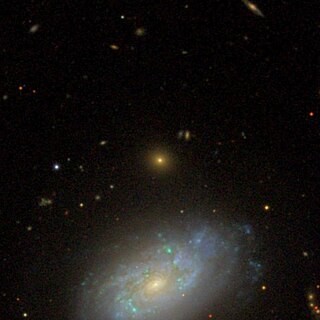
NGC 3950 is an elliptical galaxy of type E, in Ursa Major. Its redshift is 0.074602, meaning NGC 3950 is 1.03 billion light-years or 316 Mpc from Earth, which is within the Hubble distance values. This high redshift makes NGC 3950 one of the furthest New General Catalogue objects.
